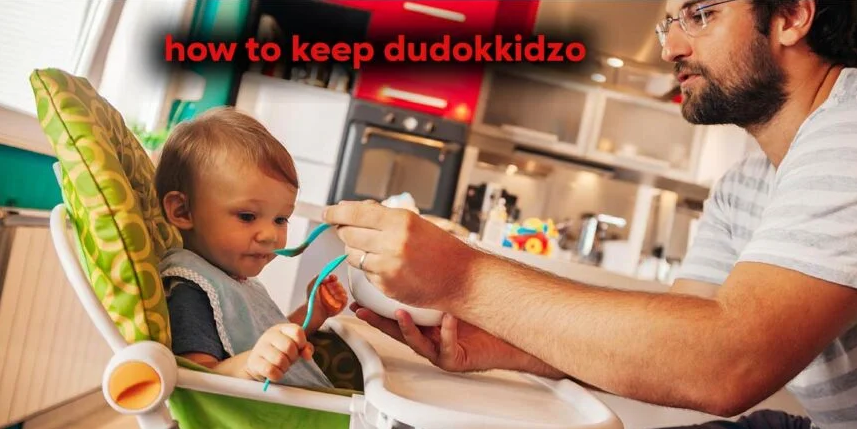So you’re wondering how to keep Dudokkidzo? Cool. Let’s keep this super simple. No fluff. No fancy talk. Just straight-up stuff you need to know if you want your Dudokkidzo alive, safe, and happy (or whatever it does).
What Is a Dudokkidzo?
Origin and Background
Nobody’s sure where the idea for How to Keep Dudokkidzo came from. Some say it’s a rare breed, others claim it’s made in a lab, and some believe it’s just a super unique species. Whatever it is, it exists, and it needs care.
Common Types or Variants
- Type A: Calm, indoor type
- Type B: Active, likes open spaces
- Type C: Hybrid, adapts based on how you treat it
Why Proper Dudokkidzo Care Matters
Effects of Neglect
- Dudokkidzo gets weak
- Stops responding or shuts down
- Starts losing color/shape/form (depends on what yours is)
Benefits of Good Maintenance
- Lives longer
- Functions better
- Looks way cooler
- Becomes more interactive
Basic Requirements to Keep a Dudokkidzo
- Clean space
- Routine feeding or energy input
- Occasional socializing (if it’s sentient)
- Quiet resting zone
Checklist of Essentials
- ✅ Daily maintenance
- ✅ Regular health checks
- ✅ Backup energy/food supply
- ✅ Basic gear (case, tools, etc.)
Ideal Environment for Dudokkidzo
Indoor vs Outdoor
- Indoors: Stable, easy to manage
- Outdoors: Only for Type B or with supervision
Light, Humidity, Airflow
- Needs soft light (avoid direct sunlight)
- Moderate humidity
- Good airflow but not direct wind
Seasonal Adjustments
- Winter: Keep warm, cover up it
- Summer: Shade + water nearby
Daily Routine to Keep Dudokkidzo Healthy
Morning Checklist
- Check condition
- Quick clean
- Give food/energy
Night Checklist
- Power down or let it rest
- Reduce surrounding noise/light
- Log any weird behavior
Feeding and Energy Management
What to Feed Dudokkidzo
- Organic pellets (if living)
- Clean charge or light (if synthetic)
- Avoid raw stuff or processed junk
When and How Much
- Young: 3 times a day
- Adult: 1–2 times a day
- Never overfeed
Cleaning and Hygiene
How Often to Clean
- Spot clean daily
- Deep clean weekly
What Products to Use
- Mild non-toxic cleaner
- No fragrance, no bleach
Signs Your Dudokkidzo Is Unwell
Physical Symptoms
- Color fading
- Cracks or loose parts
- Shrinking or swelling
Behavioral Changes
- Silent for too long
- Makes unusual noises
- Not responding to your touch/voice/commands
Emergency Dudokkidzo Care
What to Do in a Crisis
- Isolate it from everything
- Remove food or water
- Don’t panic
When to Call an Expert
- More than 2 days of no activity
- If it collapses or locks up
- If it changes shape suddenly
Traveling with Dudokkidzo
Preparing for Transport
- Get a stable case
- Line it with soft padding
- Keep it upright
During the Journey
- Keep away from the sun
- Don’t shake or flip
- Talk to it (if it likes that)
Seasonal Care Guide
Winter Protection
- Wrap in thermal cloth
- Keep inside
- Limit exposure to cold surfaces
Summer Safety
- Use fans nearby
- Provide cool water or shade
- Mist occasionally, if needed
Best Tools and Accessories for Dudokkidzo
Must-Have Items
- Feeding kit
- Cleaners
- Digital monitor (if techy)
- Travel case
Optional Add-ons
- Color changers
- Sound or mood enhancers
How to Keep Dudokkidzo Safe from Other Pets/Objects
- Don’t leave near dogs/cats
- Keep sharp items away
- Avoid heavy electronic equipment nearby
Common Myths About Dudokkidzo
What’s Not True
- “They don’t need any care.” (False)
- “They can survive in any condition.” (Also false)
- “They fix themselves.” (Wishful thinking)
Mistakes to Avoid
- Skipping checkups
- Feeding it random stuff
- Keeping it too hot or too cold
- Ignoring subtle signs
How to Train or Tame a Dudokkidzo (If Applicable)
Positive Reinforcement
- Gentle sounds
- Reward with treats or a calm space
- Consistent patterns
Consistency Tips
- Same time feeding
- Same words or commands
Dudokkidzo Care: Monthly & Yearly Checklist
| Task | Frequency | Tools Needed | Notes |
| Deep clean | Monthly | Cloth, solution | Avoid harsh chemicals |
| Behavior check | Weekly | Observation | Track in a notebook |
| Upgrade tools | Yearly | Internet, store | Optional but helpful |
| Health scan | Monthly | Basic sensor (if tech) | Call for help if red flags |
Budgeting for Dudokkidzo Care
Monthly Cost Estimate
- Food or energy: $20–40
- Cleaning supplies: $10
- Emergency stash: $50 (just in case)
Emergency Fund Suggestion
- Always keep 1 repair/replacement cost saved
How to Introduce Dudokkidzo to New Spaces or People
Gradual Exposure
- Let it sit in the new space first
- Don’t let strangers touch it right away
- Watch its reaction
Where to Get Expert Help for Dudokkidzo
Local Services
- Tech shops (if mechanical)
- Exotic pet centers (if living)
Online Resources
- Community forums
- Subreddits
- Official guides
Dudokkidzo Care vs Other Similar Species/Products
| Feature | Dudokkidzo | Common Alternative |
| Lifespan | 5–10 years | 3–5 years |
| Maintenance Level | Medium | High |
| Cost | Low to Medium | Medium to High |
| Interaction Level | Medium to High | Low or static |
Final Tips: How to Keep Dudokkidzo the Right Way
- Don’t overthink it
- Stick to a schedule
- Observe changes
- Please keep it clean, fed, and respected
- Ask for help when stuck
And that’s it.
You wanted to know how to keep Dudokkidzos? Now you do. Just care for it like you would any rare thing in your life. Simple, real, and consistent. It’ll return the favor.






